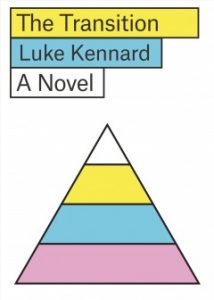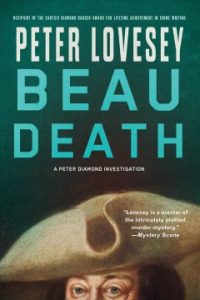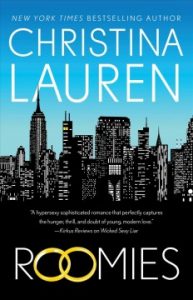And a very happy (nearly) end of February to you all, dear readers! For those of you wondering just why, precisely, February is such a short month, here is a handy article from Mental Floss that explains not only how February got established, but about the year that was 445 day long (you can read more about that illustrious year here, as well).
And once you’ve grown wiser from these astute sources, why not stop by the Library and savor some of the new materials that have traipsed onto our shelves this week, and are eager to help you look forward to spring!

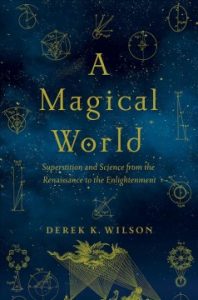 A Magical World: Cambridge historian Derek Wilson takes us on a historic journey through the European Renaissance and Enlightenment to study some of those era’s most profound scientific discoveries and revelations, from the circulatory system to the understanding of gravity. But, as Wilson notes, the individuals who developed these theories and shed light on the unknown were steeped in, and utilized, a number of traditions that often go undiscussed, from folk traditions and necromancy to alchemy. Wilson probes the history of the Catholic Church in Europe, but also ventures outside its influence to study other thinkers, such as the twelfth-century Islamic polymath, Averroes and his landmark treatises on astronomy, physics and medicine. Highly readable and fascinatingly insightful, this is a book for history buffs, science lovers, and devotees of the mystic arts alike. Library Journal agrees, saying ““Wilson ably posits that most intellectuals sought a middle way between extreme rationalism and radical religious thought, and in their embrace of both religion and science contributed invaluably to a search for understanding that continues to this day. Highly recommended for readers interested in scientific or European history.”
A Magical World: Cambridge historian Derek Wilson takes us on a historic journey through the European Renaissance and Enlightenment to study some of those era’s most profound scientific discoveries and revelations, from the circulatory system to the understanding of gravity. But, as Wilson notes, the individuals who developed these theories and shed light on the unknown were steeped in, and utilized, a number of traditions that often go undiscussed, from folk traditions and necromancy to alchemy. Wilson probes the history of the Catholic Church in Europe, but also ventures outside its influence to study other thinkers, such as the twelfth-century Islamic polymath, Averroes and his landmark treatises on astronomy, physics and medicine. Highly readable and fascinatingly insightful, this is a book for history buffs, science lovers, and devotees of the mystic arts alike. Library Journal agrees, saying ““Wilson ably posits that most intellectuals sought a middle way between extreme rationalism and radical religious thought, and in their embrace of both religion and science contributed invaluably to a search for understanding that continues to this day. Highly recommended for readers interested in scientific or European history.”
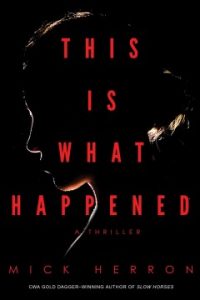 This is What Happened: We’re big, outspoken fans of Mick Herron and his Slough House tales here at the Free For All, and so the arrival of a new stand-alone novel has us all a-twitter with anticipation. Twenty-six-year-old Maggie Barnes is someone you would never look at twice. Living alone in a month-to-month sublet in the huge city of London, with no family but an estranged sister, no boyfriend or partner, and not much in the way of friends, Maggie is just the kind of person who could vanish from the face of the earth without anyone taking notice. Or just the kind of person MI5 needs to infiltrate the establishment and thwart an international plot that puts all of Britain at risk. Now one young woman has the chance to be a hero—if she can think quickly enough to stay alive. Fans of Herron’s spy fiction are sure to share our delight over this new novel, and new readers who are looking for an expertly-plotted thriller with deftly-drawn characters and a heap of wit and insight (and really, who isn’t?), should certainly start their search here. Publisher’s Weekly gave this book a starred review, calling this novel “Beautifully written and ingeniously plotted . . . This dark thriller is rife with the deadpan wit and trenchant observation that Herron’s readers relish.”
This is What Happened: We’re big, outspoken fans of Mick Herron and his Slough House tales here at the Free For All, and so the arrival of a new stand-alone novel has us all a-twitter with anticipation. Twenty-six-year-old Maggie Barnes is someone you would never look at twice. Living alone in a month-to-month sublet in the huge city of London, with no family but an estranged sister, no boyfriend or partner, and not much in the way of friends, Maggie is just the kind of person who could vanish from the face of the earth without anyone taking notice. Or just the kind of person MI5 needs to infiltrate the establishment and thwart an international plot that puts all of Britain at risk. Now one young woman has the chance to be a hero—if she can think quickly enough to stay alive. Fans of Herron’s spy fiction are sure to share our delight over this new novel, and new readers who are looking for an expertly-plotted thriller with deftly-drawn characters and a heap of wit and insight (and really, who isn’t?), should certainly start their search here. Publisher’s Weekly gave this book a starred review, calling this novel “Beautifully written and ingeniously plotted . . . This dark thriller is rife with the deadpan wit and trenchant observation that Herron’s readers relish.”
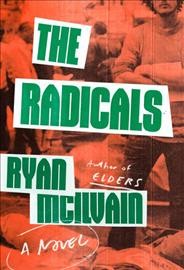 The Radicals: Ryan McIlvain’s work is very much inspired by “our current moment”, and this new novel explores the tensions and bonds created by end-stage capitalism, as well as the power, charisma and danger of true believers of all stripes in a story that works on the small and the large level with equal power. When Eli first meets Sam Westergard, he is dazzled by his new friend’s charisma, energy, and determined passion. Both graduate students in New York City, the two young men bond over their idealism, their love of poetry, and their commitment to socialism, both in theory and in practice—this last taking the form of an organized protest against Soline, a giant energy company that has speculated away the jobs and savings of thousands. As an Occupy-like group begins to coalesce around him, Eli realizes that some of his fellow intellectuals are more deeply—and dangerously—devoted to the cause than others. This book has been getting rave reviews from critics and fellow authors alike, including a starred review from Booklist, who noted “McIlvain’s exploration of the world of protesters will resound with readers interested in the personal side of dissent. McIlvain offers far more than political commentary, though, as he explores friendship, loyalty, and betrayal in a tale driven by tension and suspense.”
The Radicals: Ryan McIlvain’s work is very much inspired by “our current moment”, and this new novel explores the tensions and bonds created by end-stage capitalism, as well as the power, charisma and danger of true believers of all stripes in a story that works on the small and the large level with equal power. When Eli first meets Sam Westergard, he is dazzled by his new friend’s charisma, energy, and determined passion. Both graduate students in New York City, the two young men bond over their idealism, their love of poetry, and their commitment to socialism, both in theory and in practice—this last taking the form of an organized protest against Soline, a giant energy company that has speculated away the jobs and savings of thousands. As an Occupy-like group begins to coalesce around him, Eli realizes that some of his fellow intellectuals are more deeply—and dangerously—devoted to the cause than others. This book has been getting rave reviews from critics and fellow authors alike, including a starred review from Booklist, who noted “McIlvain’s exploration of the world of protesters will resound with readers interested in the personal side of dissent. McIlvain offers far more than political commentary, though, as he explores friendship, loyalty, and betrayal in a tale driven by tension and suspense.”
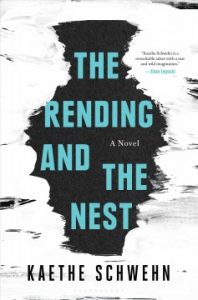 The Rending and the Nest: Literary fans looking for a new post-apocalyptic novel need look no further than Kaethe Schwehn’s debut novel, that presents a world that is startling new–and eerily familiar to our own. When 95 percent of the earth’s population disappears for no apparent reason, Mira does what she can to create some semblance of a life: She cobbles together a haphazard community named Zion, scavenges the Piles for supplies they might need, and avoids loving anyone she can’t afford to lose. She has everything under control. Almost. Four years after the Rending, Mira’s best friend, Lana, announces her pregnancy, the first since everything changed and a new source of hope for Mira. But when Lana gives birth to an inanimate object–and other women of Zion follow suit–the thin veil of normalcy Mira has thrown over her new life begins to fray. As the Zionites wrestle with the presence of these Babies, a confident outsider named Michael appears, proselytizing about the world beyond Zion. He lures Lana away and when she doesn’t return, Mira must decide how much she’s willing to let go in order to save her friend, her home, and her own fraught pregnancy. Unsettling, redemptive, and weirdly imaginative all at once, Schwehn’s book has been getting lauded as a piece of literary fiction as well as science fiction, proving once again that genre fiction is alive, well, and changing our literary landscape for the better. As Publisher’s Weekly noted in its review, “Schwehn’s bizarre novel blends seamless storytelling with the raw emotion of a world suddenly turned on its head . . . nerve-wracking in the most satisfying way, and the characters are vivid enough to elevate this story above the well-traveled terrain of postapocalyptic fiction.”
The Rending and the Nest: Literary fans looking for a new post-apocalyptic novel need look no further than Kaethe Schwehn’s debut novel, that presents a world that is startling new–and eerily familiar to our own. When 95 percent of the earth’s population disappears for no apparent reason, Mira does what she can to create some semblance of a life: She cobbles together a haphazard community named Zion, scavenges the Piles for supplies they might need, and avoids loving anyone she can’t afford to lose. She has everything under control. Almost. Four years after the Rending, Mira’s best friend, Lana, announces her pregnancy, the first since everything changed and a new source of hope for Mira. But when Lana gives birth to an inanimate object–and other women of Zion follow suit–the thin veil of normalcy Mira has thrown over her new life begins to fray. As the Zionites wrestle with the presence of these Babies, a confident outsider named Michael appears, proselytizing about the world beyond Zion. He lures Lana away and when she doesn’t return, Mira must decide how much she’s willing to let go in order to save her friend, her home, and her own fraught pregnancy. Unsettling, redemptive, and weirdly imaginative all at once, Schwehn’s book has been getting lauded as a piece of literary fiction as well as science fiction, proving once again that genre fiction is alive, well, and changing our literary landscape for the better. As Publisher’s Weekly noted in its review, “Schwehn’s bizarre novel blends seamless storytelling with the raw emotion of a world suddenly turned on its head . . . nerve-wracking in the most satisfying way, and the characters are vivid enough to elevate this story above the well-traveled terrain of postapocalyptic fiction.”
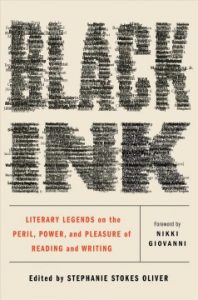 Black Ink: Literary Legends on the Peril, Power, and Pleasure of Reading and Writing: Throughout American history black people are the only group of people to have been forbidden by law to learn to read. This unique collection seeks to shed light on that injustice and subjugation, as well as the hard-won literary progress made, putting some of America’s most cherished voices in a conversation in one magnificent volume that presents reading as an act of resistance.Organized into three sections, the Peril, the Power, and Pleasure, and with an array of contributors both classic and contemporary, from Frederick Douglass to Zora Neale Hurston, and from Marlon James to Chimamanda Ngozi Adichie, Black Ink presents the brilliant diversity of black thought in America while solidifying the importance of these writers within the greater context of the American literary tradition. At times haunting and other times profoundly humorous, this unprecedented anthology guides you through the remarkable experiences of some of America’s greatest writers and their lifelong pursuits of literacy and literature. Library Journal gave this anthology a starred review, celebrating how “the works range from memoirs on the power of reading during slavery and emancipation to narratives of how certain books and authors shaped these writers’ lives and straightforward advice on composition; all address the centrality of literacy to black liberation, both personally and politically…taken as a whole, this survey of what it means to be a black reader and writer is an important and long overdue project. ”
Black Ink: Literary Legends on the Peril, Power, and Pleasure of Reading and Writing: Throughout American history black people are the only group of people to have been forbidden by law to learn to read. This unique collection seeks to shed light on that injustice and subjugation, as well as the hard-won literary progress made, putting some of America’s most cherished voices in a conversation in one magnificent volume that presents reading as an act of resistance.Organized into three sections, the Peril, the Power, and Pleasure, and with an array of contributors both classic and contemporary, from Frederick Douglass to Zora Neale Hurston, and from Marlon James to Chimamanda Ngozi Adichie, Black Ink presents the brilliant diversity of black thought in America while solidifying the importance of these writers within the greater context of the American literary tradition. At times haunting and other times profoundly humorous, this unprecedented anthology guides you through the remarkable experiences of some of America’s greatest writers and their lifelong pursuits of literacy and literature. Library Journal gave this anthology a starred review, celebrating how “the works range from memoirs on the power of reading during slavery and emancipation to narratives of how certain books and authors shaped these writers’ lives and straightforward advice on composition; all address the centrality of literacy to black liberation, both personally and politically…taken as a whole, this survey of what it means to be a black reader and writer is an important and long overdue project. ”
Until next week, beloved patrons–happy reading!


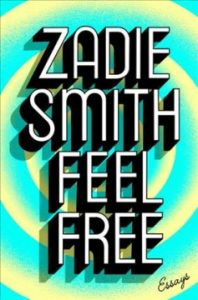
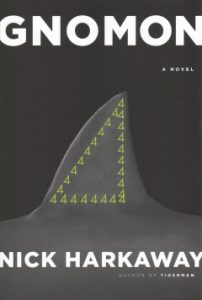
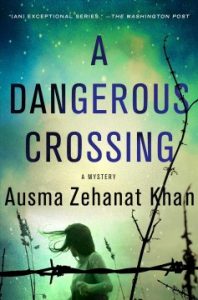

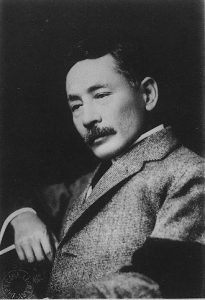
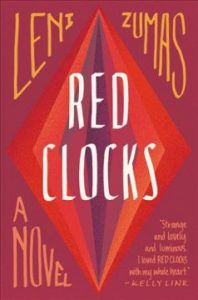
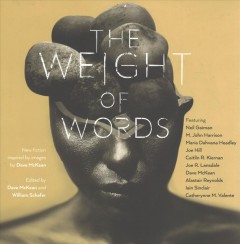
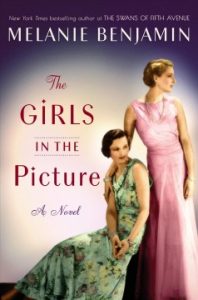
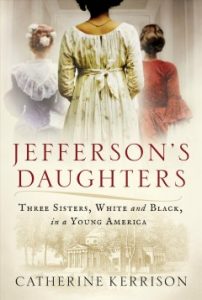
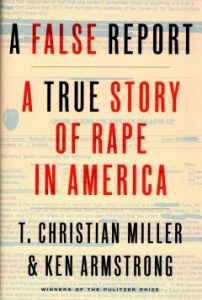

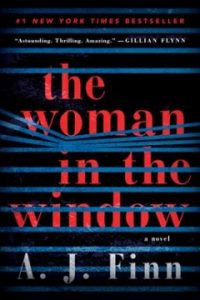
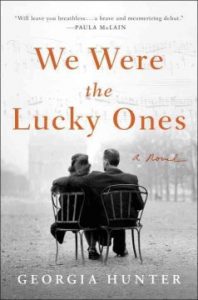


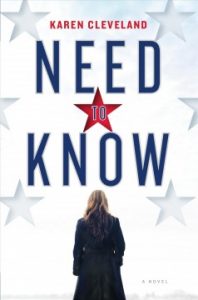
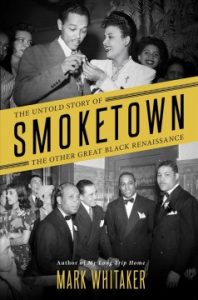
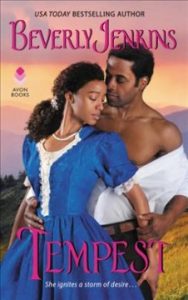

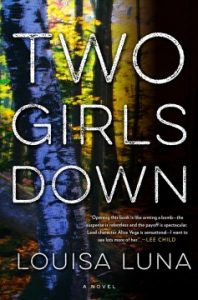
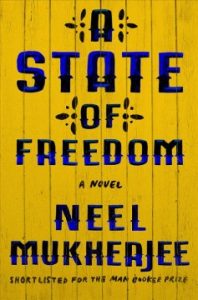
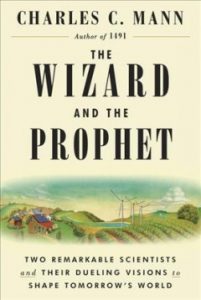
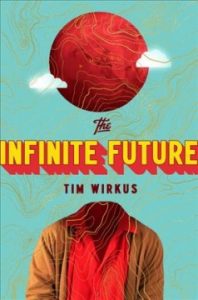

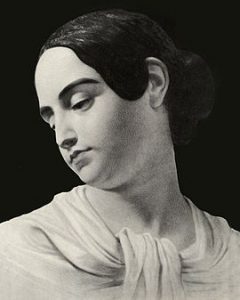 Edgar lived with the Allan family until his late teens, though he clashed with John Allan frequently over money matters. He tried enlisting in the military, and tried college, attending the University of Virginia for a year before leaving (due to lack of funds rather than a lack of intellect or ambition). Falling back on his own resources, Poe began to earn a living through writing, for working for literary journals and periodicals, mostly as a literary critic. Though he developed a name for himself (as a ruthless, curmudgeonly critic who may not have been nice, but was always cynically funny in his reviews), it was the publication of his poem The Raven in 1845 that cemented his reputation. He married Virginia Clemm (pictured at left), his 13-year-old cousin in 1836 (when he was twenty six). Biographers disagree as to the nature of the couple’s relationship. Though their marriage was loving, some biographers suggest they viewed one another more like a brother and sister, but I think it’s very fair to say that this is not a historical issue that can be conveniently swept away and forgotten. Poe’s involvement in several
Edgar lived with the Allan family until his late teens, though he clashed with John Allan frequently over money matters. He tried enlisting in the military, and tried college, attending the University of Virginia for a year before leaving (due to lack of funds rather than a lack of intellect or ambition). Falling back on his own resources, Poe began to earn a living through writing, for working for literary journals and periodicals, mostly as a literary critic. Though he developed a name for himself (as a ruthless, curmudgeonly critic who may not have been nice, but was always cynically funny in his reviews), it was the publication of his poem The Raven in 1845 that cemented his reputation. He married Virginia Clemm (pictured at left), his 13-year-old cousin in 1836 (when he was twenty six). Biographers disagree as to the nature of the couple’s relationship. Though their marriage was loving, some biographers suggest they viewed one another more like a brother and sister, but I think it’s very fair to say that this is not a historical issue that can be conveniently swept away and forgotten. Poe’s involvement in several 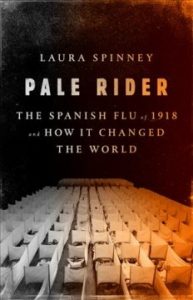
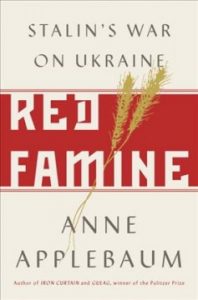
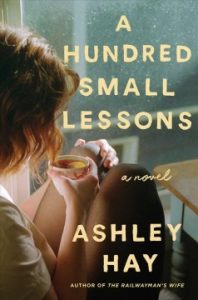

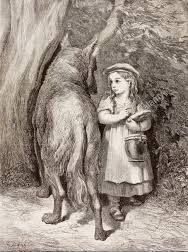 Although many of Perrault’s tales, like Cinderella and Puss In Boots remain generally the way he wrote them, a number of them were changed through re-telling. For example, his Sleeping Beauty also exists as Little Briar Rose, which was a story collected by the Grimm Brothers a century later. Additionally, his Little Red Riding Hood ended quite grimly, with Red getting eaten. The story was meant as a warning for girls not only about the danger of the forest, but of the “wolves” (read: men) who might prey upon them as they attempted to make their way through that forest. Though Charles Perrault died in Paris in 1703 at the age of 75, his stories live on today is countless adaptations, re-tellings, and in myriad versions through the years.
Although many of Perrault’s tales, like Cinderella and Puss In Boots remain generally the way he wrote them, a number of them were changed through re-telling. For example, his Sleeping Beauty also exists as Little Briar Rose, which was a story collected by the Grimm Brothers a century later. Additionally, his Little Red Riding Hood ended quite grimly, with Red getting eaten. The story was meant as a warning for girls not only about the danger of the forest, but of the “wolves” (read: men) who might prey upon them as they attempted to make their way through that forest. Though Charles Perrault died in Paris in 1703 at the age of 75, his stories live on today is countless adaptations, re-tellings, and in myriad versions through the years.